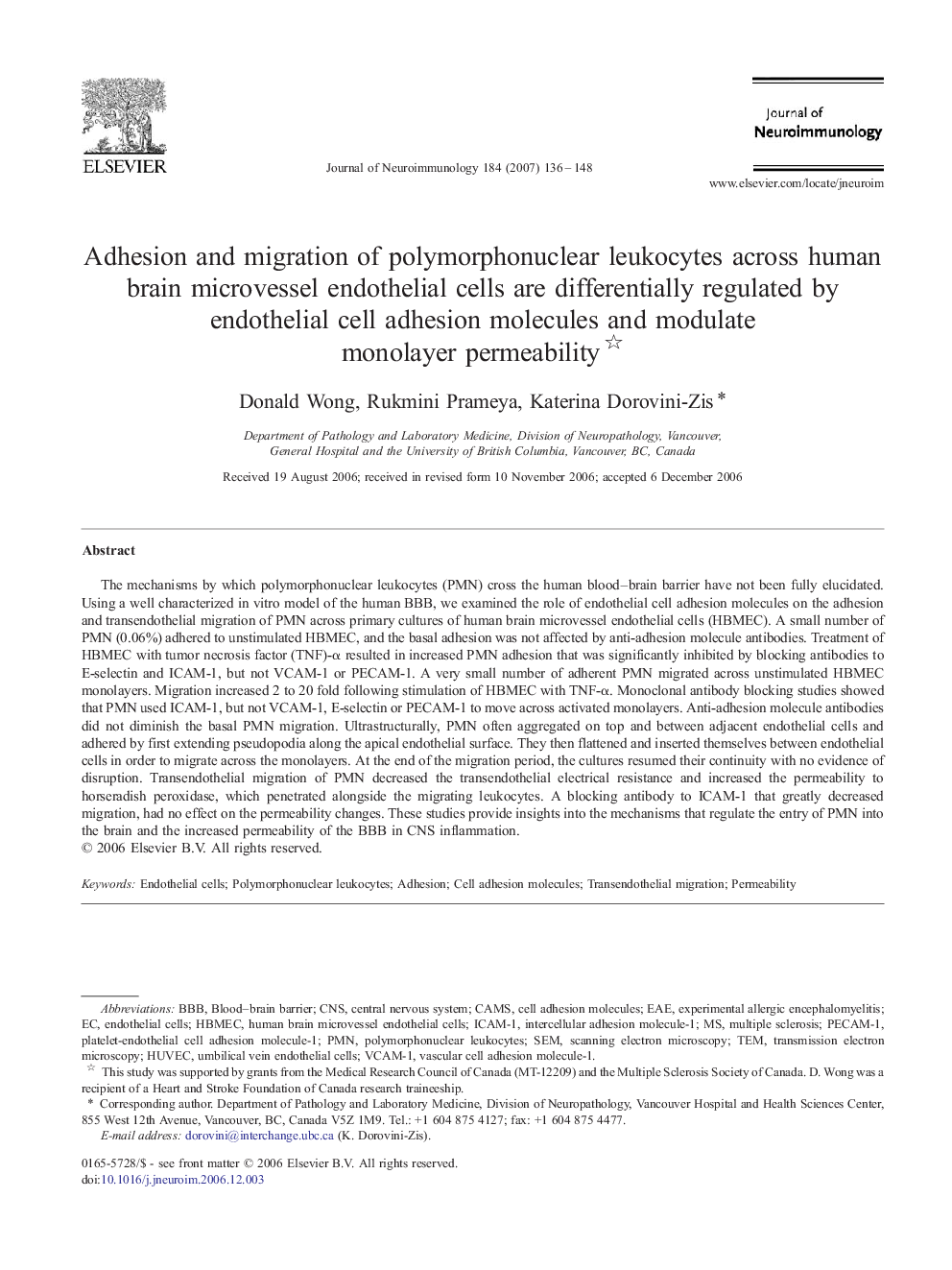| Article ID | Journal | Published Year | Pages | File Type |
|---|---|---|---|---|
| 3065749 | Journal of Neuroimmunology | 2007 | 13 Pages |
The mechanisms by which polymorphonuclear leukocytes (PMN) cross the human blood–brain barrier have not been fully elucidated. Using a well characterized in vitro model of the human BBB, we examined the role of endothelial cell adhesion molecules on the adhesion and transendothelial migration of PMN across primary cultures of human brain microvessel endothelial cells (HBMEC). A small number of PMN (0.06%) adhered to unstimulated HBMEC, and the basal adhesion was not affected by anti-adhesion molecule antibodies. Treatment of HBMEC with tumor necrosis factor (TNF)-α resulted in increased PMN adhesion that was significantly inhibited by blocking antibodies to E-selectin and ICAM-1, but not VCAM-1 or PECAM-1. A very small number of adherent PMN migrated across unstimulated HBMEC monolayers. Migration increased 2 to 20 fold following stimulation of HBMEC with TNF-α. Monoclonal antibody blocking studies showed that PMN used ICAM-1, but not VCAM-1, E-selectin or PECAM-1 to move across activated monolayers. Anti-adhesion molecule antibodies did not diminish the basal PMN migration. Ultrastructurally, PMN often aggregated on top and between adjacent endothelial cells and adhered by first extending pseudopodia along the apical endothelial surface. They then flattened and inserted themselves between endothelial cells in order to migrate across the monolayers. At the end of the migration period, the cultures resumed their continuity with no evidence of disruption. Transendothelial migration of PMN decreased the transendothelial electrical resistance and increased the permeability to horseradish peroxidase, which penetrated alongside the migrating leukocytes. A blocking antibody to ICAM-1 that greatly decreased migration, had no effect on the permeability changes. These studies provide insights into the mechanisms that regulate the entry of PMN into the brain and the increased permeability of the BBB in CNS inflammation.
